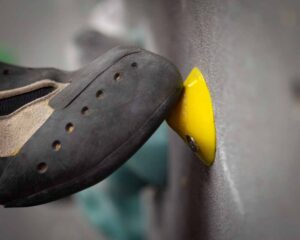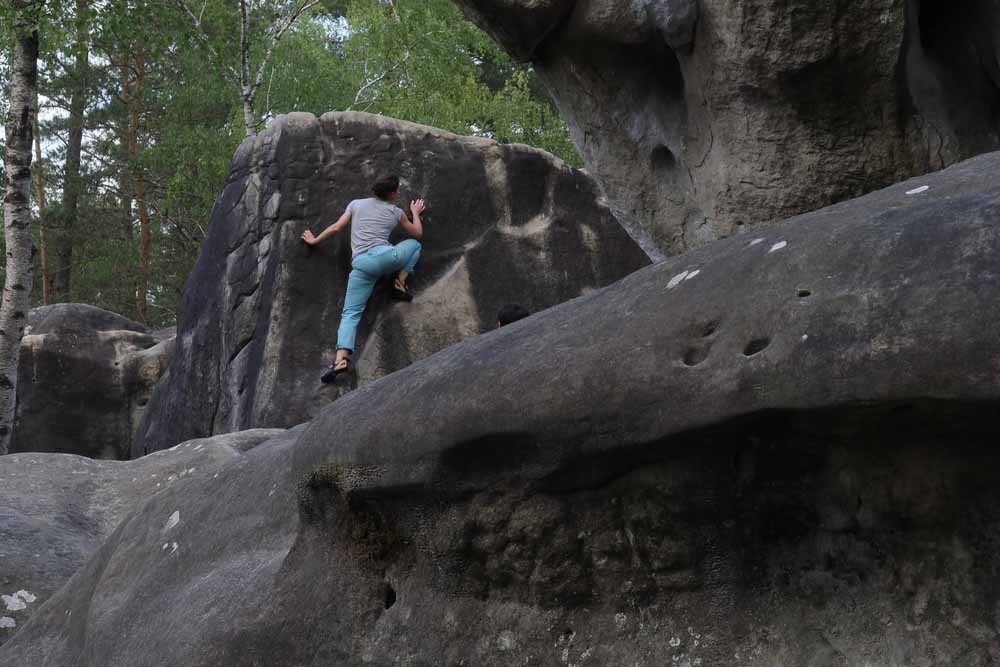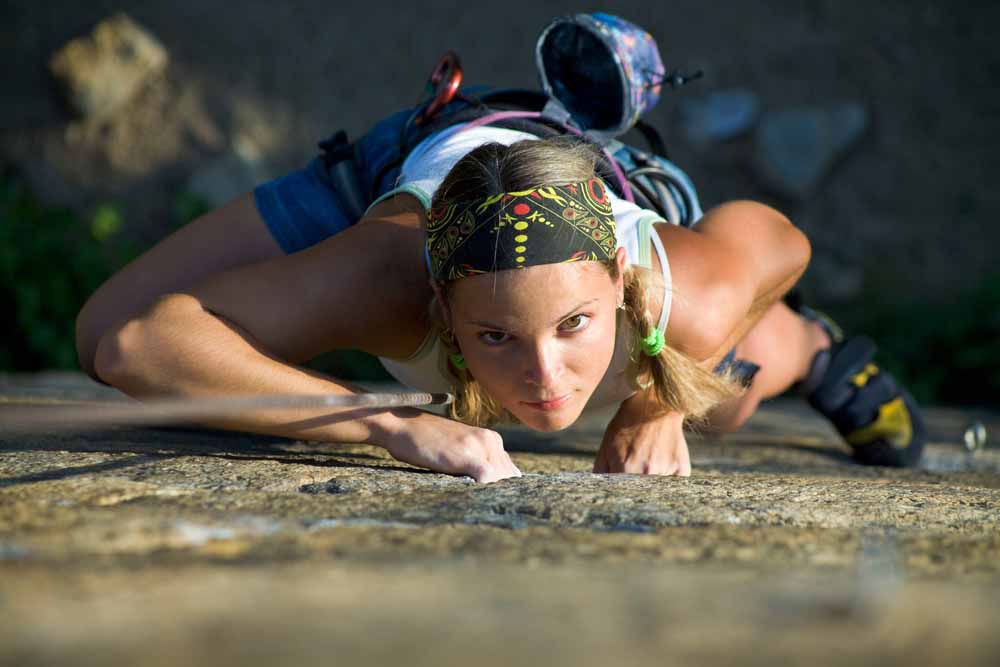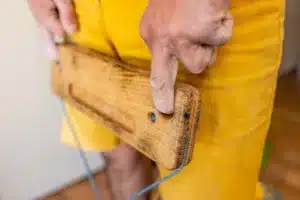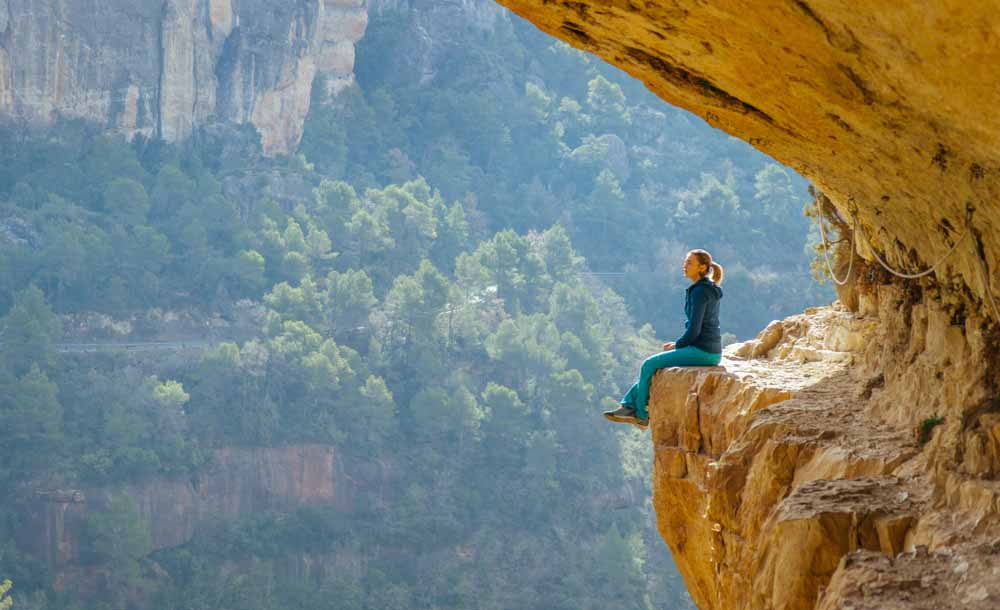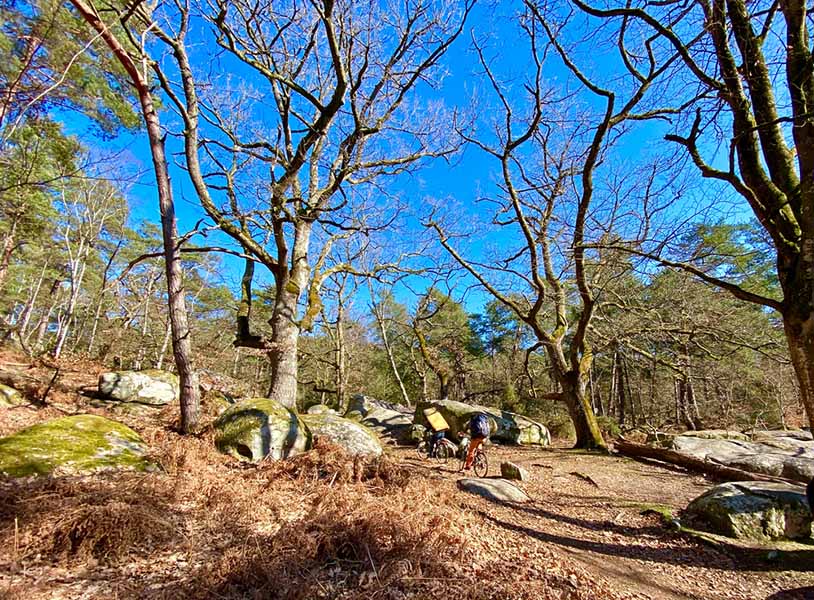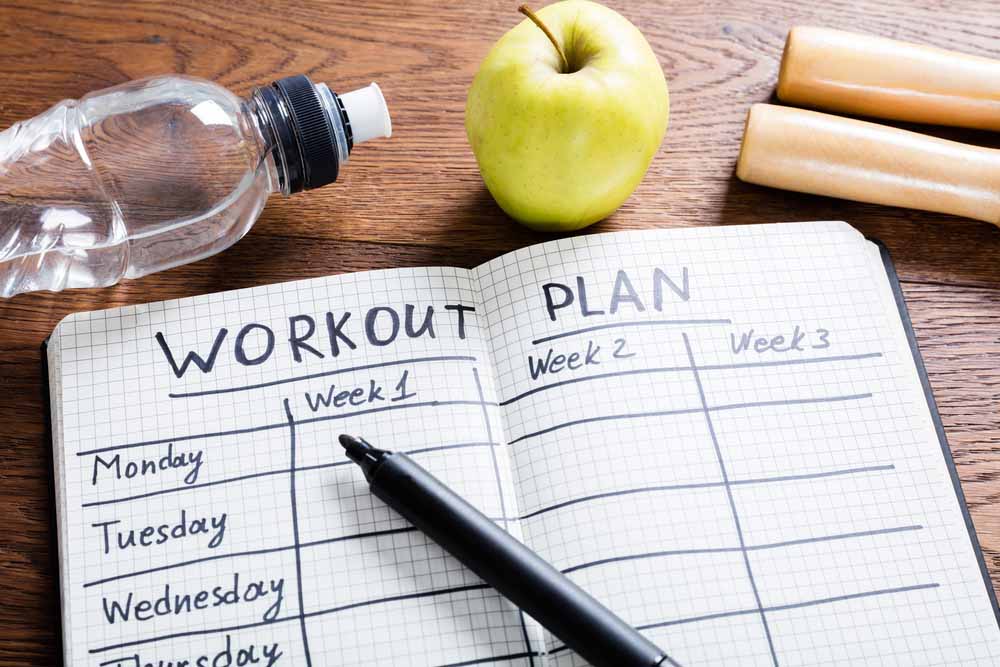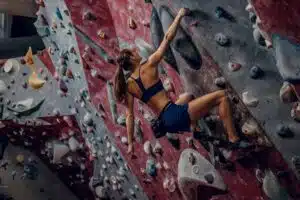As a beginner boulderer, you’re often left in awe as you watch more experienced climbers tackle V8s with ease.
And this might have left you wondering how you can become that good. Is it even possible? Did it take hard work? Or were they just born with a gift?
I remember when I first started climbing, I couldn’t believe how easy people were making it look while I was left struggling for easier grades.
And this left me wondering what I could do to improve my climbing ability. If you’re in the same boat as me, this is definitely the article for you.
The aim of this article is to give you the skills and knowledge to help you succeed in bouldering by providing some of the best beginner bouldering tips out there.
So, let’s take a look:
#1 Practice “Ninja” Climbing or Silent Climbing
One of the things I quickly learned was footwork is one of your primary keys to success. I always noticed how more experienced climbers’ feet stuck to the climbing wall while mine would slip off holds consistently.
I decided to pluck up some courage and speak to one of the more experienced climbers to find out where I was going wrong.
His beginner climbing tip for me was to practice “ninja” climbing (also known as silent climbing) to improve my footwork.
The idea is to climb up the wall without making any noise. This makes you focus on where you’re placing your feet instead of where you will put your hands.
Here’s the thing:
Our hands can naturally find the correct position much easier than our feet. So it makes little to no sense worrying about where your hands will be.
When I started concentrating on the footholds, I automatically began moving slowly but with more purpose. And within 24 hours of using this little tip, I increased my climbing level.
#2 Use Your Legs, Not Your Arms
One of the biggest mistakes I see in new climbers is they’re trying to make their arms do all the hard work… and this is a big mistake.
Most people have been walking on their legs since they were a child, which has made our legs extremely strong.
In comparison, our arms do the minimal heavy lifting, so pulling our way up climbs with our arms is very strenuous.
And this is why a fantastic beginner bouldering tip is to focus on pushing with your legs instead of only pulling with your arms.
Now, this can feel strange and, at times, slightly scary. But your climbing level can dramatically increase when you combine pushing with your legs and focus on footwork.
Give it a try next time you’re at your local bouldering gym; you might be surprised by the results.
#3 Practice New Climbing Techniques
When you watch experienced climbers, you’ll probably notice they are doing stuff with their legs and feet that you’ve never seen before.
And this is because they’re using specialized climbing techniques to help them conquer the climb. And by learning them yourself, you can push yourself to a higher level.
Here are a few techniques that as a beginner it’s a great tip to learn:
Heel Hooks & Toe Hooks
Heel hooks and toe hooks are excellent techniques that can help you easily stick your feet to the wall or help pull yourself up.
Toe hooks are used when making a move that pulls your body away from the wall. Using the toe of your climbing shoe, you can wedge your foot onto the hold to stop your swinging.
Heel hooks can be used similarly, but they’re also great for creating leverage to pull your body up the climb and onto the next hold.
Drop Knee
Another great technique to learn is the drop knee because it brings your body closer to the wall making it easier to hang on.
To drop your knee, you need to place your foot on the edge of the hold, drop your knee inward and down toward your body, and rotate your hip into the wall to reach the next hold.
Flagging
Some routes are notorious for being hard to balance, so you might need to flag a leg to use as a counterbalance. Sticking your leg out one way or the other might give you the equilibrium you need to stay on the wall.
#4 Plan Your Route Before Your Climb
Have you ever sat there and watched an experienced climber before they started a climb? Have you noticed them moving their hands and wondered what the hell they’re doing?
Well…
They’re planning their route. They want to know precisely when they will make moves and where you place their hands. This means they can concentrate on their feet more effectively while knowing where their hands are going.
Before you start climbing, spend a few minutes planning your route so you know exactly where you’re going.
#5 Think While You’re On The Wall
Thinking about the climb before you start is an important beginner bouldering tip, but just as importantly, you need to think while on the wall.
Here’s the thing:
Taking the extra second to re-evaluate your movements before your next move could be the difference between topping out or falling to the floor.
The trick is to stop, take a breath, and think about your next position. And, of course, there will be certain places on the wall where you can’t rest, so power through until you can take a second.
#6 Climb With More Experienced Climbers
One thing that really helped me advance was climbing with people at a higher level than me; it was a fantastic learning experience.
Not only did they teach and guide me with better techniques, but they also gave me a better attitude toward training.
At first, it was a bit embarrassing; they were all so much stronger and technically gifted that I felt awkward. But once I got past that, I found out that they really wanted to help me improve, and I began to enjoy our gym sessions.
You have to remember many of these climbers would have been in the same position as you’re in now, and they’re more than happy to help you progress.
So, next time you’re at the gym, ask one of the more experienced climbers if they can give you some tips or tricks to get past the route you’ve been stuck on for weeks.
#7 Practice Climbing Down
Of the beginner bouldering tips you’re bound to hear, this one is perhaps less popular. We spend most of our time climbing up walls and jumping off (even if we shouldn’t). And this means we spend practically no time at all climbing down.
Learning how to climb down the route isn’t just for your safety. It also helps you build endurance for longer climbs. It can also help you get out of dangerous situations without hurting yourself.
And lastly, it helps you build opposing and antagonistic muscles that don’t get used as much when climbing. In the long run, it will make you a stronger climber.
#8 Take Classes
If you’re new to climbing, there are a lot of skills you need to learn if you’re planning to get good at the sport. And learning it all by yourself is no easy task, but luckily you don’t have to do it alone.
One of the best ways to progress quickly in any sport is to have lessons and learn from someone far more experienced than yourself who can provide valuable beginner bouldering tips that you might not hear from new climbing friends.
When it comes to climbing, you need to learn a core set of skills before setting off by yourself, and an instructor can teach all of these things. They’ll also help to drill out any bad habits you may have picked up along the way.
These days, most climbing walls have an instructor there where you can choose a personal or group session.
I usually go with group sessions because they are cheaper and because I like the group aspect.
If you’re uncomfortable in large groups or want a more personal session, you should try a few one-on-one sessions.
#9 Make Sure You Have A Rest Day
Taking a rest day is essential in climbing, and unlike popular belief, you don’t lose strength by taking a day off.
Rest days are incredibly beneficial for your body because they give you time for muscle recovery. This allows you to refill your tank and return stronger the next day.
If your climbing level is starting to falter or you lack upper body strength, try taking a few days off and letting your body recover, especially is you’ve been training regularly.
#10 Go Bouldering More Often
One of the best beginner bouldering tips to help you improve is to simply go more often. There’s no better way of reaching your climbing goals than spending time on the route you’re trying to conquer and training more.
Bouldering involves making powerful, dynamic, and acrobatic moves, which are incredibly challenging. And with consistent repetition of these moves, you can build the strength you need to improve.
#11 Make A Training Plan
Making a training plan aligning with your fitness goals is a great way to improve your climbing ability and has to be one of the best beginner boulder tips. Plus the great thing is, there are 1,000s of resources for you to use, from coaches to online tutorials.
In this section, I wanted to give you some insight into training your strength, stamina, and flexibility.
Let’s take a look:
Strength
In recent years, training equipment has become a lot more common, and you can find them in most climbing gyms or set them up at home.
Things like…
- Moon boards
- Kilter boards
- Or campus boards
… are all excellent tools you can use to help increase your climbing strength and thus improve your bouldering grades.
But there is a problem:
Many beginner climbers will find these tools too intense for their muscles, which means they could injure themselves.
So, if you’re planning on using any of these tools, it’s recommended that you try to improve your strength using other means like bouldering.
Once you feel like you’re at a more comfortable level, you can start using the tools to push yourself to the next level.
Stamina
When you first start bouldering, stamina is one of your toughest challenges to overcome. You’ll find that muscles begin to burn after a few climbs, but it’s okay; it can be trained.
Unfortunately, bouldering isn’t an excellent exercise for building stamina and endurance because of the short nature of the climbs.
And this is why many climbers will hit laps on the auto-belay. The climb’s long nature helps you build the stamina you need to climb for longer.
Flexibility
Bouldering requires a certain level of flexibility if you want to push your climbing to the next level. And this is why you’ll see so many climbers stretching after a climbing session.
Another great way of increasing your flexibility is to take some yoga classes. They’ll give you the guidance you need to improve your mobility.
#12 Climb With New Friends
You can help to increase your bouldering grades by starting climbing with new people. Climbing is an excellent way to meet new people anyway, so why not use this to your advantage?
Climbers are friendly and welcoming, so no matter where you climb, you can make new friends.
And the best thing is:
It’s not just good for your social life but also for learning new things. Climbing with people that are better than you helps push you.
Not only that, but they’ll teach you the moves you need to get over the crux move you’ve been struggling with.
Climbing with the same people week in and week out is excellent, but it does get a bit stale, and you can find yourself stuck at the same level.
But, by introducing yourself to new climbers, you’ll find your climbing grades begin to increase.
So, if you’re a beginner climber, try going out with some at an intermediate level. And if you’re an intermediate climber, try getting in with some of the local advanced climbers.
Final Thoughts on Beginner Bouldering Tips
When you’re just starting climbing, you might feel a little bit overwhelmed. It’s hard watching more experienced climbers top a climb with ease while you keep falling.
But here’s the thing:
By following some of these beginner bouldering tips and putting in the practice, you can get to that same level, and possibly exceed your expectations.
You need to remember, bouldering requires strength, technique, and mental resilience. So, if you get those three things sorted, you’ll be an advanced climber in no time.


